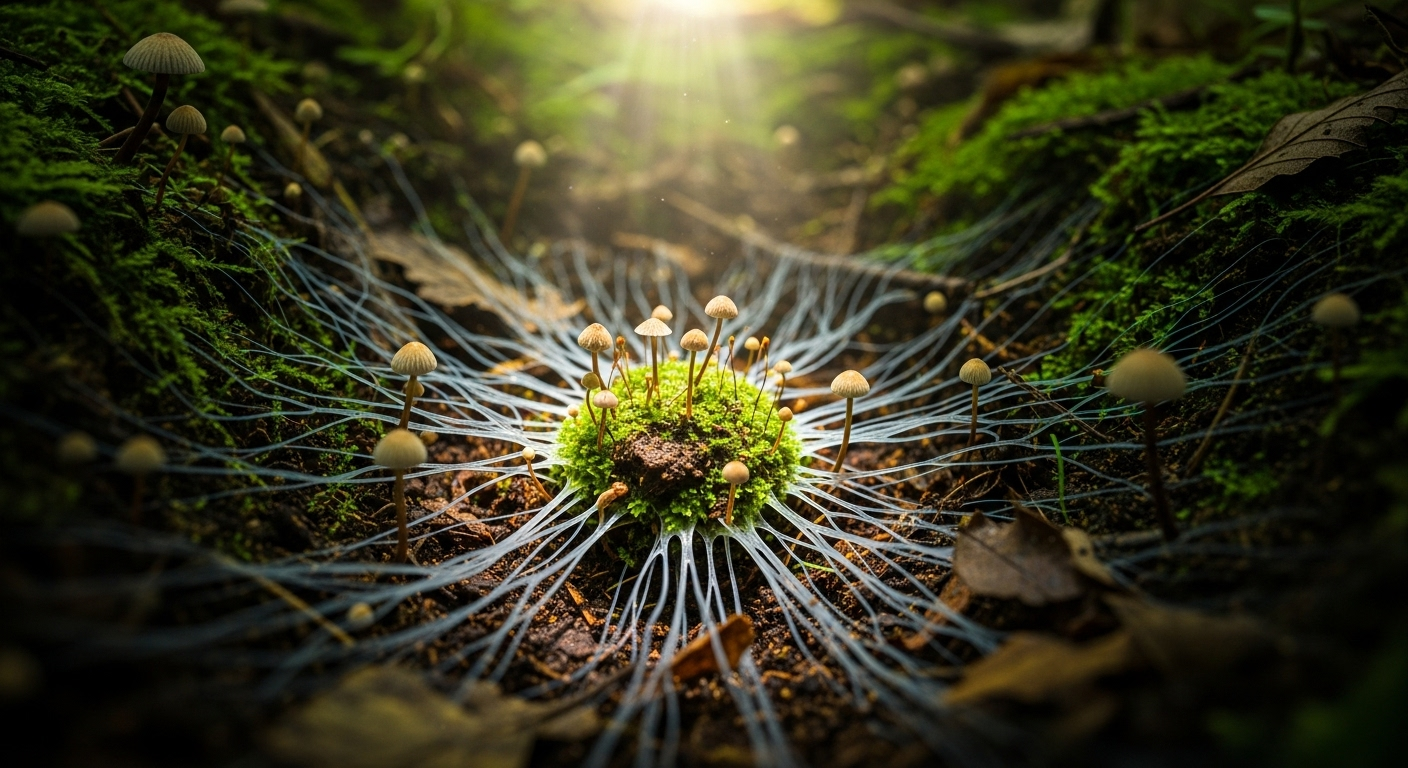Mycelial Networks: Nature's Hidden Health Allies
The uncharted world beneath our feet holds a secret that could revolutionize our approach to health and wellness. Have you ever wondered how trees communicate, or how nature's own internet might benefit human health? Welcome to the fascinating realm of mycelial networks, where fungal threads weave a web of life-sustaining connections that could hold the key to groundbreaking advances in medicine and environmental health.

The Hidden World of Mycelial Networks
Mycelial networks are the vegetative part of fungi, consisting of thread-like structures called hyphae that spread underground in vast, interconnected webs. These networks can span thousands of acres, forming the largest known organisms on Earth. Far from being mere decomposers, mycelia play a crucial role in ecosystem health, facilitating nutrient exchange between plants and acting as a communication superhighway for forests.
The discovery of mycelial networks dates back to the 1990s when researchers first observed how trees used these fungal connections to share resources and information. This breakthrough challenged our understanding of forest ecosystems and opened up new avenues for exploring the potential health benefits of these remarkable natural systems.
Mycelial Networks and Human Health
The potential applications of mycelial networks in human health are vast and largely untapped. Research has shown that certain fungi within these networks produce compounds with powerful medicinal properties. For instance, some mycelia-derived substances have demonstrated impressive anti-inflammatory, antioxidant, and immune-boosting effects in preliminary studies.
One of the most promising areas of research involves the use of mycelial extracts in cancer treatment. Compounds found in certain fungi have shown the ability to inhibit tumor growth and enhance the effectiveness of conventional cancer therapies. While more research is needed, these findings suggest that mycelial networks could play a significant role in future oncology treatments.
Environmental Health and Mycelial Remediation
Mycelial networks are not just potential allies in human health; they’re also powerful tools for environmental restoration. The process known as mycoremediation uses fungi to clean up contaminated environments. Mycelial networks can break down complex pollutants, including oil spills, pesticides, and even radioactive waste, into less harmful substances.
This natural cleansing ability has profound implications for both environmental and human health. By harnessing the power of mycelial networks, we could potentially clean up polluted sites more efficiently and sustainably than with current methods, reducing our exposure to harmful toxins and improving overall ecosystem health.
The Gut-Mycelium Connection
Recent studies have drawn intriguing parallels between mycelial networks and the human gut microbiome. Both systems function as complex communication networks that play crucial roles in their respective ecosystems. This similarity has led researchers to explore how insights from mycelial networks might inform our understanding of gut health and its impact on overall well-being.
Some scientists propose that certain compounds produced by mycelial networks could act as prebiotics, supporting the growth of beneficial gut bacteria. This potential synergy between fungal networks and our internal ecosystems opens up exciting possibilities for developing new approaches to digestive health and beyond.
Future Directions: Mycelial Medicine and Wellness
As our understanding of mycelial networks deepens, so too does their potential to revolutionize health and wellness practices. Researchers are exploring innovative ways to harness the power of these fungal networks, from developing new pharmaceuticals to creating sustainable materials for medical applications.
One particularly exciting area of research involves the use of mycelium-based materials in wound healing. Some fungi produce compounds that accelerate tissue regeneration and possess natural antimicrobial properties. These characteristics could lead to the development of advanced wound dressings that not only protect against infection but actively promote healing.
Mycological Marvels: Fascinating Facts About Fungal Networks
-
Mycelial networks can transmit electrical signals, similar to the human nervous system
-
A single teaspoon of healthy soil can contain up to 8 miles of fungal threads
-
Some mycelial networks can sense and respond to human footsteps
-
Certain fungi in mycelial networks can break down plastic, offering potential solutions to pollution
-
Mycelial networks have inspired new models for computer and communication systems
As we continue to unravel the mysteries of mycelial networks, we stand on the brink of a new frontier in health and environmental science. These remarkable fungal systems offer a powerful reminder of the interconnectedness of all life and the untapped potential of nature’s own innovations. By embracing the wisdom of mycelial networks, we may well discover new pathways to holistic health, environmental restoration, and sustainable living practices that benefit both humanity and the planet as a whole.




